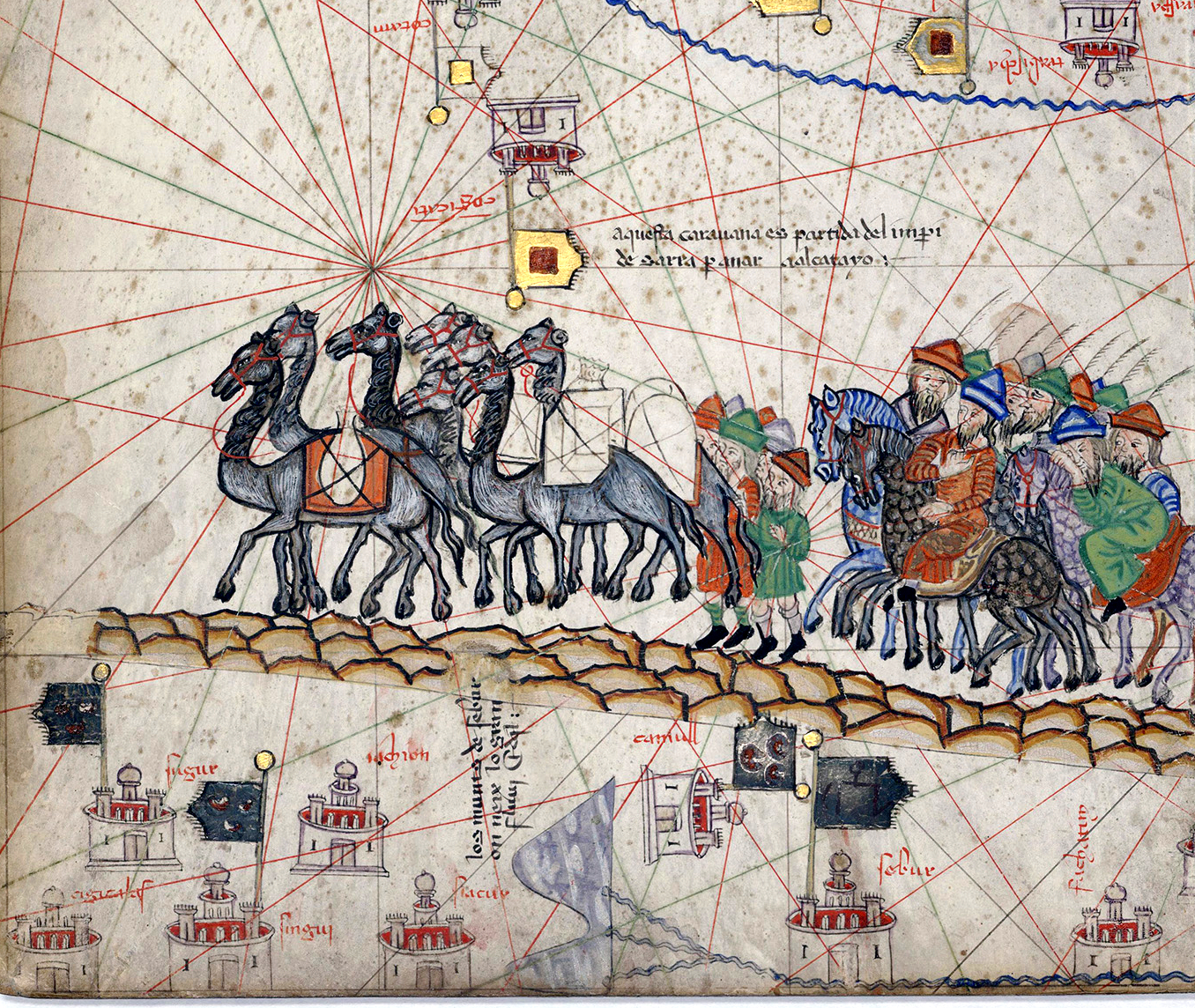Sunday Book Review: The Silk Roads

Peter Frankopan’s The Silk Roads places the Middle East and Central Asia at (as their names imply) the center of world history. Frankopan argues that trade across Central Asia was critical not only for the development of the civilizations on either side, but also gave rise to world historical developments within the area, including the expansion of the Persian Empires, the rise of Islam, and the development of a global system of trade in the immediate pre-modern era.
Frankopan is a strong proponent of the idea that the connections between Asia and Europe, manifested in the social and political structures of Central Asia and the Middle East, are critical to understanding the development of civilizations East, West, and Middle. Frankopan wants to shift the history of the ancient and medieval worlds, and by extension the modern world, both conceptually and geographically. On the geographic side he wants us to focus on the huge, significantly populated, and deeply ancient territories that lie between the population centers of Europe and Asia. On the conceptual side he wants us to think about the economic connections that spanned ancient and medieval Eurasia, a system that later came to encompass Africa and even the Americas as a unitary conceptual whole.
On this Frankopan does a fine job. He introduces a tremendous level of detail regarding early (4th century) trade between Europe and Asia, which very quickly began to have noticeable economic effects on both sides. He discusses the Middle Eastern and Central Asian empires in terms of how they managed this trade, and how they managed their position astride the Eurasian continent. He points out (and in this he is not novel) that the economic relevance of what we now think of as Western Europe had declined to a very low ebb before the revolution introduced by direct maritime trade with Asia, Africa, and the Americas. He details the religious, political, and military ideas that take hold of these networks and spread across them to the far corners of Eurasia. And finally, he investigates the disruptive impact that the great maritime expeditions of the 15th century had to the nature and existence of these networks.
But herein lies a problem. The first three fifths or so of Frankopan’s account is outstanding, and in accord with his general thesis about the importance of the Middle East and Central Asia. The last two fifths of the book, coming after the opening of reliable maritime trade routes between Europe and Asia, is less so. Portuguese, Spanish, French, and English naval expansion rendered many of the old trade routes fundamentally obsolete in terms of the transfer of heavy goods. This made control of those territories considerably less relevant for imperial powers near and far. Britain, Russia, and the Ottoman Empire would continue to compete over control of these territories, but would derive relatively little economic value from their occupation. Indeed, the survival of independent polities in Persia and Afghanistan are surely in some degree due to their economic irrelevance to the imperial powers that would eventually surround them.
What changes this is oil. By World War I, the United Kingdom (and shortly thereafter the rest of the world) becomes aware of the economic relevance of oil to an industrial economy. This suddenly makes control of the Middle East and Central Asia (particularly the latter) relevant to the great powers. It would be interesting to speculate (which Frankopan does not) what would have happened to the Ottoman Empire if it had not been dismembered in World War I; it *might* have come into possession of vast amounts of the most important economic resource that the world has ever known. Whether it could have maintained control is a different question, but the complete economic irrelevance of the Arab world to the Ottomans surely played some role in their tepid defense of those territories.
In any case, there can’t be any question that the story of the Middle East and Central Asia fundamentally changes in the 20th century. Frankopan continues his narrative with acknowledgement and discussion of this transformation, but not with an admission that his story has fundamentally changed. Oil is undoubtedly important, but the story of oil is only accidentally geographically coincident with the story of the Silk Road. Frankopan decides not to decide whether his story is about the Silk Road (incredibly important!) or the Middle East and Central Asia (also incredibly important) which end up being two related but distinct narratives. And it doesn’t help that the 2oth century ends up being almost half of the book.
Notwithstanding my curmudgeonly disapproval of the narrative structure, this is a really valuable book. You’ll likely learn a lot about the ancient and medieval worlds, both of which were far more complex than older histories have indicated. The connections between East and West had a deep impact on the development of each; in some ways the civilizations helped to constitute one another. Frankopan is an excellent storyteller with an encyclopedic command of the history, and the book is well worth your time.

